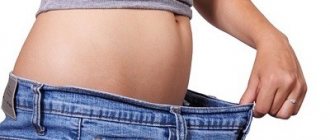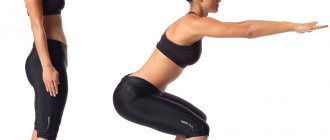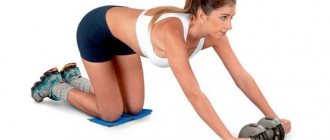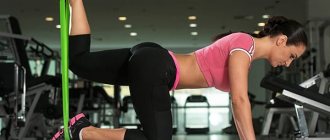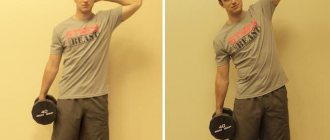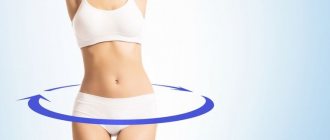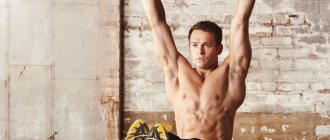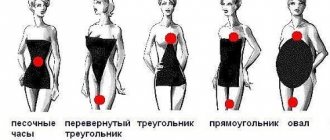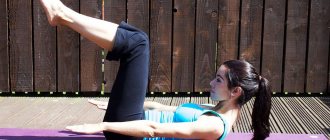Exercising with leg weights can help sculpt your hips and ankles, helping you build muscle and improve your workout performance. Proper use of auxiliary equipment can form beautiful contours of the legs, as well as bring considerable health benefits.
Exercises with weights can:
- strengthen the heart and vascular system;
- improve blood circulation indicators;
- improve the functioning of the respiratory system.
Types of weights
There are two types of weighting agents:
- On a printed or bulk basis. The first type appeared much earlier than the second and is considered obsolete. It looks like a bag filled with salt or sand. Such a projectile limits weight adjustment.
- On a plate basis. The plate type is equipped with specially designed pockets into which metal plates are sewn. The number of plates is adjusted depending on the required physical activity and type of exercise.
Weights are presented in a fairly wide range:
- Weights designed for working out the arms are made like cuffs. Arm cuffs have a high degree of popularity. They are designed to improve the force of impact and increase the tone of the muscles of the arms and shoulder area. There is a special type of weights designed for training people involved in boxing. They are made in the form of gloves.
- Leg weights also come in the form of cuffs. They have gained particular popularity among the fair half of humanity, as they are able to correct problem areas of the body. This look can make your figure slim, strengthen the muscles of the whole body and give it vigor. Leg cuffs strengthen the buttock area.
- Weights designed to work out the waist area look like a belt. They are able to strengthen the abs and tighten the stomach. Belong to the safe category.
Harmonious development
This option is suitable for those who are seriously involved in bodybuilding and powerlifting. In these sports, a lot of stress is placed on the abdominal muscles, and therefore they must be quite strong, but at the same time large.
If you have never seriously pumped up your abs, both lower and upper, then you need to prepare the tissues for serious loads.
The essence of the classes is to use the principle of supercompensation, which consists of increasing strength and mass after restoration of damaged fibers.
But if you start doing too much damage right away, your muscles may become too stressed or injured.
In addition, it can destroy all your motivation, since painful sensations the next day can leave you bedridden.
At the very beginning, spend a month doing lower abdominal exercises at home. This will prepare your body for more serious stress. The most classic movements, such as twisting and leg lifts, are suitable for this.
After the body gets a little stronger, you can move on to the main training process.
It’s worth clearing right away: the main goal is quality, not quantity. Therefore, like action heroes, you don’t need to do countless repetitions to epic music.
Bulk and plate
As stated above, there are two varieties.
Let's take a closer look at the structure of each of them:
- The bulk type has a fabric base in the shape of a cuff. It happens that cuffs are made of knitted or rubberized fabric. The higher the density of the fabric, the better the product. The filler is salt or sand, metal shavings, and shot. The price of such a model depends on the material it is made of. These weights are worn on the legs and arms depending on the exercise. The weight of the device varies from 500 g. up to 5 kg. Buy them in pairs.
- Plate-based weights are equipped with special pockets into which plates of varying weights are inserted. They have a wide range of weight adjustment.
What exercises are they suitable for?
For young people who do not suffer from any diseases, it is not particularly difficult to perform very simple exercises for the legs. Simply bend and straighten your legs while sitting or lying down. The number of repetitions increases progressively.
- Walking with weights can make your legs more elastic. You can also run with weights or just do housework.
- A very simple form of exercise is squats. The back and head should be in a level position. The heels should not leave the floor. Sit as low as possible.
- Take a lying position on your back. Hands closed behind head. Raise your legs one at a time. Start with 10 lifts and gradually increase their number.
- Take a lying position on your side. Place your legs straight. One hand is extended forward, the other rests on the head. The leg at the top rises to any angle. Switch sides.
- Stand straight and raise your legs alternately at an angle of 90°. The number of lifts is not standardized. It all depends on your capabilities.
Straight leg lowering
This exercise is also called “Scissors”, and is one of the top ten for the gluteal muscles, along with the Bicycle lying on the floor. Difficulty is high. The muscles of the thighs, buttocks, and lower abdominal muscles are involved. You can learn about the 4 difficulty levels of “Scissors” here.
- Starting position: lying on your back, both legs raised at an angle.
- Alternately lower the right and left straight legs.
The exercise can be made more difficult by lowering both legs at the same time.
More details in the video:
An effective set of exercises
The best exercises with leg weights are:
- Weights are placed on the ankles. Close your feet. Place your hands on your belt. The right leg takes the weight of the body, and the left one stands on the half toes. Exhale and move it to the side so that the position of the pelvis does not change. Exhale and lower your leg. Repeat the same with the other leg.
- Keep your feet together. The arms are bent at the elbows. The body weight is on the right leg, and the left leg is bent at the knee, the toe is raised above the floor. The body should not lean forward. Lower your leg, but don't touch the floor. Continue in the same manner. Do the same with the other leg.
- Keep your body straight. Feet hip-width apart. The left leg is pulled back. Raise your leg as high as possible, while your body should not move and your lower back should not bend. Lower your leg, but don't touch the floor. After performing a series of movements, repeat the same on the other leg.
Moving the leg to the side
Difficulty - medium. The inner and outer thighs and gluteal muscles work.
In the ranking of the TOP 10 exercises for the buttocks, “Leg Swings” take 5th place .
- Starting position: standing. Hands are either free or on the hip joints.
- Select the first supporting leg (let it be the left one). We lean on this limb, while exhaling we move our right leg to the side, and while inhaling we return it back.
We perform 10-15 such movements. We repeat similarly for the other leg.
What other types of leg swings are there? 4 most popular options.
This movement is shown even more clearly in the video:
Execution technique
- Whatever types of weights you use during physical activity, do not forget that they should not be used immediately, but gradually. In addition, when using a weighting agent whose weight is greater than the previous one, it is advisable to resort to preliminary thorough kneading of the body.
- Drawing up a set of physical exercises only with the use of weights is inappropriate.
- The weight of weights varies from 0.5 to 5 kg. But do not strive to use the heaviest devices. Weights serve as an additional load, otherwise the exercise technique will be impaired. For each leg, it is recommended to perform up to 30 repetitions with 2 or 3 approaches.
Common mistakes
- As mentioned, the most common mistake is using a heavy weight. You risk damaging your tendons.
- You shouldn't wear them at home all the time. This will not lead to anything good. A disease such as arthritis may occur.
- Don't focus on using only weights. If you want to work on your punching power, then dumbbells and a barbell are suitable. Vary your exercise routine and you will experience greater results.
Running with weights
Running with weights is suitable for professional sports representatives: sprinters, football players, basketball players, etc., who want to increase the level of maximum effort. This technique is in no way suitable for beginners and amateurs. The latter run the risk of seriously injuring ligaments and tendons, since their body is not adapted to such loads, and there will be no benefit from this.
If you want to increase your intensity level, you can combine weight training with hill running, or simply increase the pace of your workout through interval training.
Contraindications
Before starting your workout, it is recommended to watch a video of abdominal crunch exercises and read the contraindications. These include:
- herniated discs;
- osteoporosis;
- last stages of osteochondrosis;
- pregnancy.
Intensified training is also prohibited for people with diseases of the cardiovascular system, kidneys, respiratory organs, and gastrointestinal tract.
If these or other problems exist, then all training should be carried out under the guidance of a trainer and with the permission of a doctor. It is recommended to go to physical therapy to keep the stress on your back light.
Benefits of use
Physical exercise using weights has a number of advantages:
- Exercises of this kind help strengthen bones. They serve as an excellent prevention against osteoporosis and build new bone tissue.
- Burn fat and strengthen muscles. As a result, your figure takes on beautiful shapes.
- The appearance of massive, rough muscles is excluded.
Taking the leg back
Difficulty is low. Works the back of the thigh and gluteal muscles.
This is probably one of the simplest and most popular exercises with small weights for the buttocks. The thigh muscles are also involved.
- Starting position - standing, join your feet, put your hands on your waist.
- As you exhale, gently move your straight left leg back as far as it will go, maintaining a straight and stable position.
We perform 10-15 repetitions and repeat the exercise for our right leg.
More details in the video:
Adviсe
- During the cold season, weights should be kept in a warm, dry place.
Constantly change the weight of the weights. Take both heavier and lighter ones. It has been proven that getting used to a certain weight of weights reduces the level of effectiveness of physical exercise.
- Using weights is great. But experts do not recommend their use if you suffer from diseases of the musculoskeletal system or have orthopedic problems.
- If weights cause pain during training, then you should resort to reducing the load or even abandoning their use.
- Do not wear them if they are damp from sweat.
- In winter, it is better to wear belts over a warm jacket.
- Do not run wearing weights on ice in water bodies.

